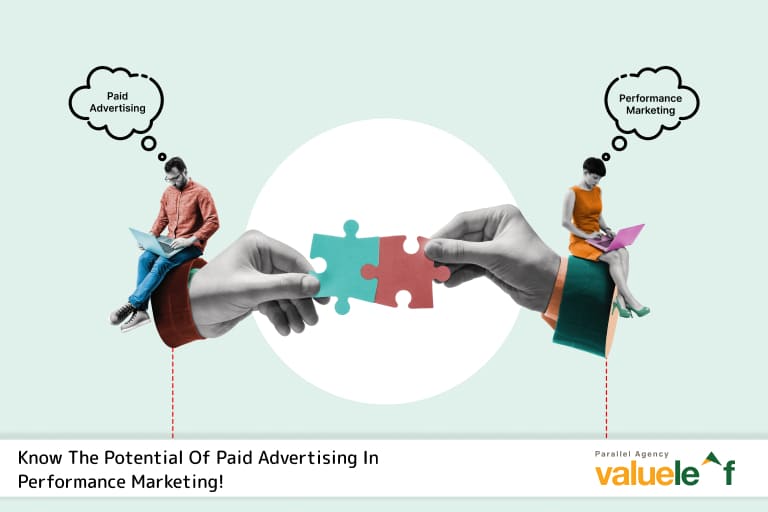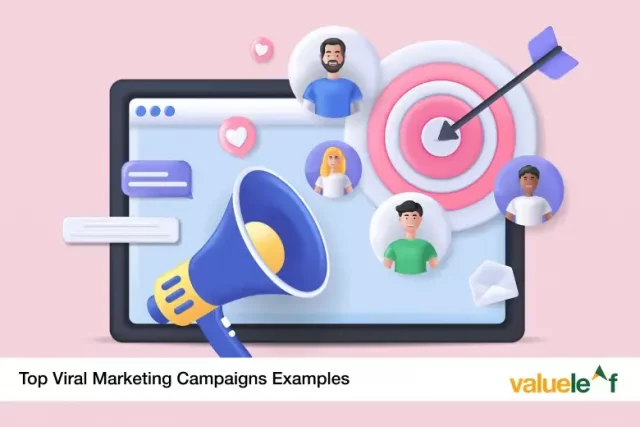Paid Advertising might just be your shortcut to the spotlight. Businesses are synonymous with competition and innovation. Staying ahead of the game and staying on top is an essential aspect of a successful business. So, what kind of advertising can highlight your business?
If your first thought was paid advertising, well, you’re halfway there!
Paid advertising and performance marketing is the solution. Paid advertising, also known as pay-per-click (PPC) advertising, involves paying to display ads to a specific audience, while performance marketing focuses on measuring and optimizing campaigns based on predefined performance metrics. By combining these two approaches, businesses can maximize their reach, engagement, and ROI.
Let’s start with understanding the basics.
So, What’s Paid Advertising?
Paid advertising is a model where advertisers pay for each click their ads receive. This allows businesses to display their ads on search engines, social media platforms, and other websites, ensuring that their messages reach a relevant and engaged audience.
The goal of paid advertising is to strategically promote products or services to achieve business objectives.
Let’s Understand Performance Marketing
Performance marketing, on the other hand, is a data-driven approach to marketing that focuses on achieving specific, measurable outcomes. Advertisers in performance marketing pay for actions, such as clicks, leads, or conversions, rather than simply impressions or ad views.
The goal of performance marketing is to drive a direct and measurable impact on a business’s bottom line.
Why Do We Integrate Paid Advertising and Performance Marketing?
Paid ads boost brand visibility, while performance marketing focuses on measurable outcomes.
This integration allows for data-driven decisions, precise targeting, and continuous optimization, resulting in cost-effective campaigns and maximum ROI. By combining broad reach with conversion-focused tactics, businesses create a holistic approach that leverages the strengths of each discipline, ultimately driving more effective and efficient marketing outcomes.
So, what happens when we integrate paid advertising and performance based marketing? What is the result of this integration? All in all, what is the full potential of paid ads and performance marketing?
So, What’s the Full Potential of this Integration?
- Precision Targeting for Maximum Impact
One of the standout features of paid advertising is its ability to target specific demographics and interests. Through platforms like Google Ads and social media advertising, businesses can tailor their ads to reach the most relevant audience. This precision targeting minimizes wasted ad spend and maximizes the impact of each campaign. - Real-Time Analytics for Informed Decision-Making
Performance marketing thrives on data-driven insights, and paid advertising platforms provide real-time analytics to help advertisers make informed decisions. Monitoring key metrics allows businesses to adjust their strategies on the fly, ensuring ongoing optimization for better results. Key metrics here include click-through rates, conversion rates, and return on ad spend. - Scalability for Business Growth
Paid advertising offers scalability, making it suitable for businesses of all sizes. Whether you’re a startup looking to establish your online presence or a well-established company aiming for further growth, paid advertising allows you to allocate your budget strategically and scale your campaigns based on performance.
Now that we know the full potential of this integration, let’s create a winning strategy!
Winning Strategy With PPC Search and Performance Based Advertising
Pay-Per-Click (PPC) search advertising is the foundation of performance-based advertising. Here’s a step-by-step guide for a successful strategy:
-
Define your goals and objectives:
Define clear goals for paid ads and performance marketing. It will guide your strategy and help you measure success.
-
Know your Ideal audience:
Know the demographics, interests, behaviors, online habits of customers. Tailor your messages and targeting for precision.
-
Choose the right platforms:
Choose platforms that match your audience and goals—options like Google Ads, social media ads, and influencer marketing.
-
Set realistic budgets:
Set your budget based on overall marketing goals. Distribute the budget wisely across platforms and campaigns.
-
Develop compelling ad creatives:
Create compelling ads that grab attention, convey your message, and resonate with your audience.
-
Track and measure performance:
Set KPIs aligned with campaign goals. Regularly analyze data from paid ads and performance marketing platforms to measure, improve, and optimize strategies.
Remember, a winning paid advertising and performance marketing strategy is an ongoing process that requires continuous monitoring, optimization, and refinement.
Final Thoughts
It’s not just about spending money on ads; it’s about strategically investing in channels that align with your business goals.
By understanding the fundamentals of paid advertising and its integration into performance marketing strategies, businesses can effectively drive engagement, conversions, and ultimately, business growth. Remember, a winning strategy is not a one-time effort but an ongoing process.
Seize the opportunity, create a compelling strategy, and let your business thrive in the world of paid advertising and performance marketing!
Frequently Asked Questions
Q. What is the role of paid advertising in performance marketing, and why is it important?
A. Paid advertising plays a crucial role in performance marketing by driving targeted traffic to websites or landing pages, facilitating conversions, and measuring the return on investment (ROI) of advertising campaigns.
Q. What are the key benefits of incorporating paid advertising into a performance marketing strategy?
A. Targeted audience reach and measurable ROI are the key benefits of incorporating paid advertising into a performance marketing strategy.
Q. What types of paid advertising platforms and channels are most effective for performance marketing goals?
A. SEM platforms like Google Ads and Bing Ads and social media platforms like Facebook, Instagram, and LinkedIn are most effective paid advertising platforms and channels for performance marketing goals.
Q. Are there specific industries or businesses that can benefit the most from paid advertising in performance marketing?
A. E-commerce, SaaS, lead generation, local, travel and hospitality are specific industries that can benefit the most from paid advertising in performance marketing.
Q. How can I determine the right budget for paid advertising within my performance marketing plan?
A. Determining the right budget for paid advertising within your performance marketing plan requires a comprehensive approach that considers several factors like business goals, industry benchmarks, historical data, campaign costs and ROI.
Q. What metrics and key performance indicators (KPIs) should I track to measure the success of paid advertising in performance marketing?
A. Click-through rate, conversion rate, cost per acquisition, and return on Ad spend are metrics and key performance indicators that you can track to measure the success of paid advertising in performance marketing.




